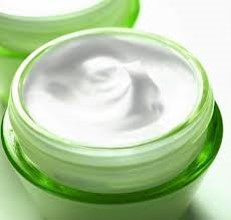New skin moisturizers set to hit the market this year will be the first personal care products to contain “water magnets” developed in nanoscience studies at the University of Guelph.

The water-retaining properties of certain nanoparticles were first discovered by U of G physics professor John Dutcher and his research team.
The nanoparticles will be contained in three new moisturizer brands and show up soon in new anti-aging cosmetics.
Dutcher and his team, along with scientists at Oak Ridge National Laboratory in Tennessee, studied the unusual structure and properties of water held inside the nanoparticles.
Their work is described in two recent studies published in the journal Biomacromolecules.
“This research has gone a long way to explaining why water interacts so strongly with these particles and makes them act essentially as water magnets,” Dutcher said.
Line up about 1,000 of these particles and they would span the width of a human hair, said Dutcher, who led the discovery of the particles in 2008.
In experiments at Guelph, Dutcher and post-doc Michael Grossutti used infrared spectroscopy to compare the structure of water inside the particles with that for moisturizing agents used in currently available cosmetics.
These nanoparticles hold water much longer than other moisturizing agents. They also hold water more consistently than other agents that gain or lose water with changing humidity.
Confined in ultra-tiny dimensions, water molecules become highly ordered and tightly bonded, said Dutcher. “Because the water is strongly bound, it doesn’t come out easily.”
Referring to skin care products, he says, “That’s a tangible benefit to the consumer, especially coming from a 100-per-cent natural product.”
In separate neutron-scattering experiments in Tennessee, Dutcher and American researchers showed that these nanoparticles have uniform density and size, and determined how m any water molecules are contained in each particle.
any water molecules are contained in each particle.
The nanoparticles are made of highly branched glucose sugar chains extracted and purified from corn. In the plant, they form a glycogen-like molecule used to store energy.
Understanding the science of these phytoglycogen nanoparticles will help in developing not just better cosmetics but also enhanced foods, nutraceuticals and drug products, said Dutcher.
Nanoparticles form the basis for ingredients being made by Mirexus, a spinoff company founded by Dutcher and his team.
Mirexus is now providing nanoparticles to three natural cosmetics companies all releasing new moisturizing creams this year.
He said the particles will soon be used in anti-aging creams. “If you can keep tissue hydrated, it’s less likely to age.”
At U of G, Dutcher holds the Canada Research Chair in Soft Matter and Biological Physics.
Funding for this research was provided by the University’s partnership agreement with the Ontario Ministry of Agriculture, Food and Rural Affairs.
Contact:
Prof. John Dutcher
Department of Physics
dutcher@uoguelph.ca
519 824-4120, Ext. 53950